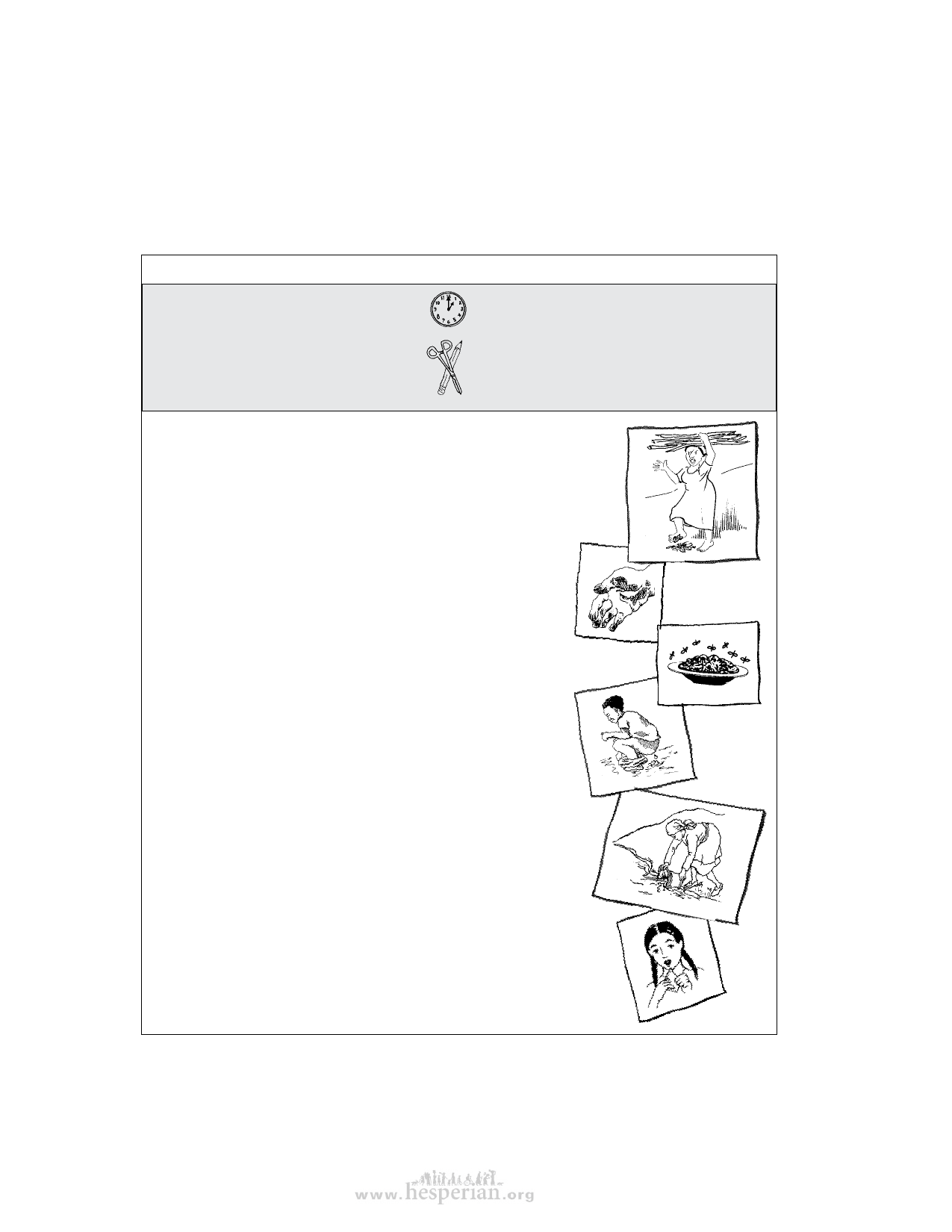
16 Sanitation and Cleanliness for a Healthy Environment
Community education activity: Preventing diarrhea
The next 2 pages have a drawing activity to learn about how diarrhea diseases spread and
how to prevent them from spreading. After doing these activities, it may be useful to read
and discuss pages 6, 7, and 8.
How diarrhea diseases spread
This activity helps to explain how
germs that cause diarrhea pass
from person to person. People make
drawings and put them together to
form a ‘story’ about how diarrhea
spreads.
Time: 1 to 1 ½ hours
Materials: small drawing paper, large
drawing paper, colored pens or markers,
sticky tape, sample drawings.
➡ Step 1: Form groups of 5 to 8 people. Each person draws a
picture that shows something about how she thinks people get
diarrhea. Each drawing should show just one part of the story of
how diarrhea spreads. If a person has difficulty drawing, she can
write a word instead or get help from someone else. It may help
to have sample drawings to stimulate the group discussion.
➡ Step 2: Within each group, each person shows her or
his drawing. The other people in the group tell what they
see. This is to make sure that every person understands
the drawings.
➡ Step 3: Each group puts their drawings in an order
that makes a story about how germs spread. If the group
sees that there are drawings missing, they can make new
drawings to fit the story. When the drawings are in order,
they are taped to a larger piece of paper. Arrows can be
drawn between the drawings to make a chart that tells the
story of how germs spread.
➡ Step 4: Each group shows its chart to the other groups. The
group showing the drawings tells the ‘story’ of how diarrhea
passes from one person to another.
➡ Step 5: The whole group now has a discussion about
the activity. Is every group’s story the same? How are the
stories different? Why? Talk about the ways diarrhea can
spread. How do economic and social conditions put people
at risk? What behaviors and beliefs put people at risk of
infection? What other ways do diseases spread that were
not illustrated in the activity?
This activity can be used to talk about other health problems as well, like parasites,
cholera, malaria, and HIV/AIDS.